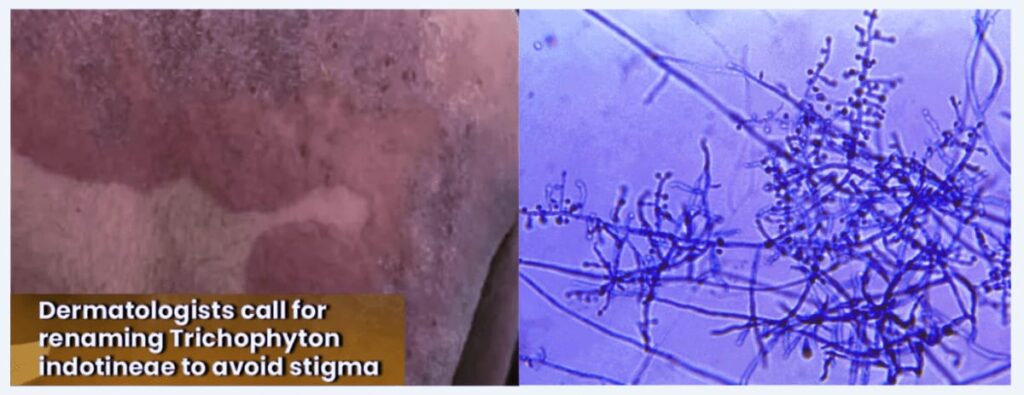Category
Date Posted
March 13, 2025
/
0 Comment
CONTEXT: Recently, dermatologists from India and thirteen other countries expressed their objections to the region-specific name assigned to a newly identified species of fungus, known as Trichophyton (T.) indotineae.
The Issue with Disease Naming
- The name of the fungus can sometimes be prejudicial, perpetuating stereotypes and biases.
- These names often ignore the recommendations of the World Health Organization (WHO), which aims to avoid stigmatization.
- Inaccurate or harmful names can lead to misinformation, stigmatization, and racial prejudice, affecting affected communities and people’s perceptions.
About Trichophyton indotineae
- The fungus was first identified in patients from India and Nepal in 2020 and was considered a new species, named Trichophyton indotineae.
- The origin of the fungus remains unclear.
- Since its discovery, Trichophyton indotineae has been reported in over 40 countries.
- The fungus causes widespread, hard-to-treat skin infections, typically presenting as red, itchy, and scaly patches.
- It has shown resistance to most first-line anti-fungal treatments, making it difficult to manage and treat.

How Are Diseases Designated?
- The World Health Organization (WHO) is responsible for naming both new and, in rare cases, existing diseases, following the guidelines of the International Classification of Diseases.
- The naming process involves consultation with WHO member states and adheres to guidelines set by the WHO in 2015.
Terms Discouraged in Disease Nomenclature:
Certain terms are discouraged when naming diseases, to avoid stigma or misinformation:
- Geographic identifiers (e.g., Middle East Respiratory Syndrome, Spanish Flu, Rift Valley Fever).
- Names of individuals (e.g., Creutzfeldt-Jakob disease, Chagas disease).
- Names of animal species or food products (e.g., Swine flu, bird flu, monkeypox).
- Cultural, demographic, industrial, or occupational references (e.g., Legionnaires’ disease).
- Terms that may provoke unnecessary alarm (e.g., unknown, fatal, epidemic).
Preferred Naming Convention:
- The WHO encourages using generic descriptive terms that reflect the symptoms associated with the disease (e.g., respiratory disease, neurologic syndrome, watery diarrhea).
Lorem ipsum dolor sit amet, consectetur adipiscing elit. Ut elit tellus, luctus nec ullamcorper mattis, pulvinar dapibus leo.
